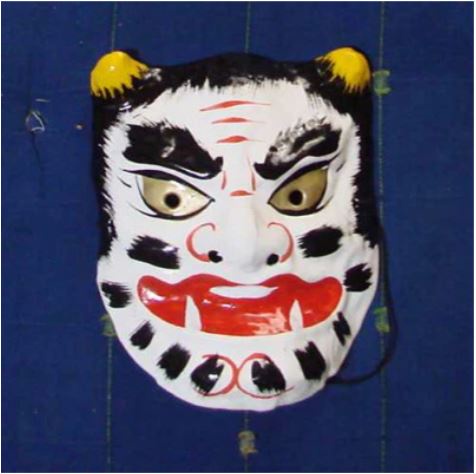Introduction
Japan is a country renowned for its rich cultural heritage, and one of the most fascinating aspects of this heritage is its traditional masks. These masks have been used for centuries in various rituals, ceremonies, and performances, and they hold deep cultural and historical significance. In this comprehensive guide, we will explore the fascinating world of Japanese masks, their history, types, meanings, and how they are used today.
History of Japanese Masks
The history of Japanese masks dates back to ancient times, with evidence suggesting that masks were used in rituals and ceremonies as far back as the Jomon period (10,000 B.C. to 300 B.C.). However, it was during the Noh and Kyogen theater traditions of the 14th century that masks truly became an integral part of Japanese culture. These masks were used by actors to portray various characters, and each mask was carefully crafted to express specific emotions and traits.
Types of Japanese Masks
There are several types of Japanese masks, each with its own unique characteristics and purposes. Some of the most notable types include:
-
Noh Masks: These masks are used in the Noh theater tradition and are known for their minimalist design and subtle expressions. Noh masks are crafted from wood and are painted in vibrant colors to represent different characters, such as gods, spirits, and demons.
-
Kyogen Masks: Similar to Noh masks, Kyogen masks are used in the Kyogen theater tradition. However, Kyogen masks are known for their exaggerated expressions and comedic features, reflecting the lighthearted nature of Kyogen plays.
-
Kabuki Masks: Kabuki masks are used in the Kabuki theater tradition and are known for their elaborate designs and bold expressions. These masks are often used to portray villains, heroes, and supernatural beings, and they play a crucial role in bringing Kabuki characters to life.
-
Hannya Masks: Hannya masks are one of the most iconic Japanese masks, known for their demonic appearance and twisted expressions. These masks are often used to portray vengeful spirits or demons in traditional Japanese folklore.
Meanings and Symbolism of Japanese Masks
Japanese masks are not just decorative items; they are imbued with deep symbolic meanings and are often used to convey specific messages or emotions. For example, the Hannya mask is said to represent the inner demons and jealousy that lie within us all, while the Noh mask known as "Okina" represents wisdom and longevity.
How Japanese Masks are Used Today
While traditional Japanese masks are still used in traditional theater performances, they have also found new life in modern contexts. For example, Japanese masks are often used in festivals, parades, and other cultural events to celebrate Japan's rich cultural heritage. Additionally, Japanese masks have also become popular as decorative items and collectibles, with many people around the world appreciating their beauty and craftsmanship.
FAQ
Q: Are Japanese masks only used in traditional theater? A: While Japanese masks have a long history in traditional theater, they are also used in various other contexts, such as festivals, parades, and cultural events.
Q: Are Japanese masks only made of wood? A: While traditional Japanese masks are often made of wood, there are also masks made from other materials, such as clay, paper mache, and metal.
Q: Can I buy authentic Japanese masks outside of Japan? A: Yes, authentic Japanese masks can be purchased from specialized stores and online retailers that specialize in traditional Japanese crafts.
Q: Are Japanese masks only used by actors? A: While Japanese masks are commonly used by actors in traditional theater, they are also used by dancers, musicians, and other performers to enhance their performances.
Q: What is the significance of the colors used in Japanese masks? A: The colors used in Japanese masks often have symbolic meanings. For example, red is often used to represent passion or anger, while white is associated with purity and innocence.
Conclusion
In conclusion, Japanese masks are not just artistic creations; they are a reflection of Japan's rich cultural heritage and are deeply rooted in its history and traditions. Whether used in traditional theater or as decorative items, Japanese masks continue to captivate people around the world with their beauty, craftsmanship, and symbolic meanings.


No comments yet